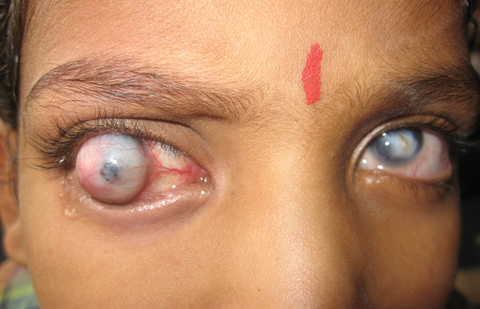Same time, another place

An 8-year-old boy with marasmus presented with poor vision. His right eye had a staphyloma and his left eye a leukoma. He was totally blind in the right eye. His visual acuity in the left eye was only perception of light. Corneal transplantation for his left eye has been planned. The right eye will be enucleated and an ocular prosthesis implanted.
Online responses are no longer available. Please refer to our instructions for authors page for more information.




